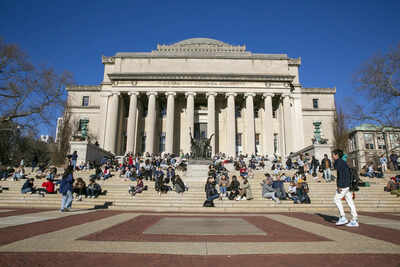Revised US endowment tax hits Ivy League universities, while smaller elite colleges remain unaffected

In a sweeping shift to how America’s wealthiest universities are taxed, the US Congress has passed new legislation that sharply increases the tax burden on the endowment earnings of large private institutions, while quietly carving out exemptions for smaller but equally well-funded colleges. As part of a major tax and budget package signed by former President Donald Trump, the revised law raises the excise tax rate on endowment income to as much as 8%, up from the previous 1.4%, for the richest universities. But a late-stage amendment now spares around two dozen smaller elite colleges, some with endowments rivaling the Ivies, simply because they enroll fewer than 3,000 full-time students.This last-minute exemption has effectively redrawn the tax map of US higher education, exposing the country’s most prominent research universities to higher tax liabilities while offering financial relief to a select group of liberal arts and STEM institutions.
Ivy League universities face higher tax rates
Under the new tax structure, institutions with endowments exceeding $2 million per student will now pay an 8% excise tax on their investment earnings. Those with endowments between $750,000 and $2 million per student will pay 4%, while those between $500,000 and $750,000 will continue at the 1.4% rate first introduced in 2017.Based on 2023 data, at least 11 institutions are expected to move into the higher tax brackets. Princeton, Yale, and MIT are likely to face the full 8% rate, while Harvard, Stanford, Dartmouth, and Vanderbilt fall into the 4% category. Another five—including Duke, Penn, and Brown—are expected to maintain the current 1.4% tax rate.
Small but elite colleges secure exemption
In a development that has sparked debate, colleges with fewer than 3,000 full-time, tuition-paying students will be entirely exempt from the tax, regardless of how large their endowments are. This clause, introduced during Senate negotiations, benefits institutions such as Swarthmore, Amherst, Wellesley, Caltech, and Hillsdale College. Though some of these schools have endowments worth more than half a million dollars per student, their limited enrollment shields them from the tax that now affects their larger counterparts.Grinnell College in Iowa, for instance, with just under 1,800 students and a significant endowment, is projected to save approximately $2.4 million annually under the new rules.
How politics shaped the exemption
Originally, the House version of the bill aimed to penalize universities viewed as politically or ideologically out of step with Republican leadership. Proposals to exclude foreign students from headcounts and exempt religious or non-federally funded institutions were blocked by the Senate Parliamentarian, citing procedural violations under the Byrd rule.The final compromise focused on enrollment numbers—a decision widely seen as a workaround to protect Hillsdale College, a conservative institution with outsized influence in Republican circles. However, the exemption also unintentionally benefited several progressive-leaning liberal arts colleges, highlighting the unpredictable consequences of last-minute legislative negotiations.
Uncertain future for college endowment policy
While the exemption is a relief for small colleges today, policy experts caution that these protections may not hold. With the new law expected to generate $761 million in additional tax revenue from colleges over the next decade, far below the $6.7 billion projected under the original proposal, the debate around taxing higher education endowments is far from settled.For now, the revised tax law delivers a clear message: size matters. Large, resource-rich universities will pay more, while smaller but well-endowed colleges, regardless of their ideological orientation, have successfully sidestepped the financial hit, at least for now.





